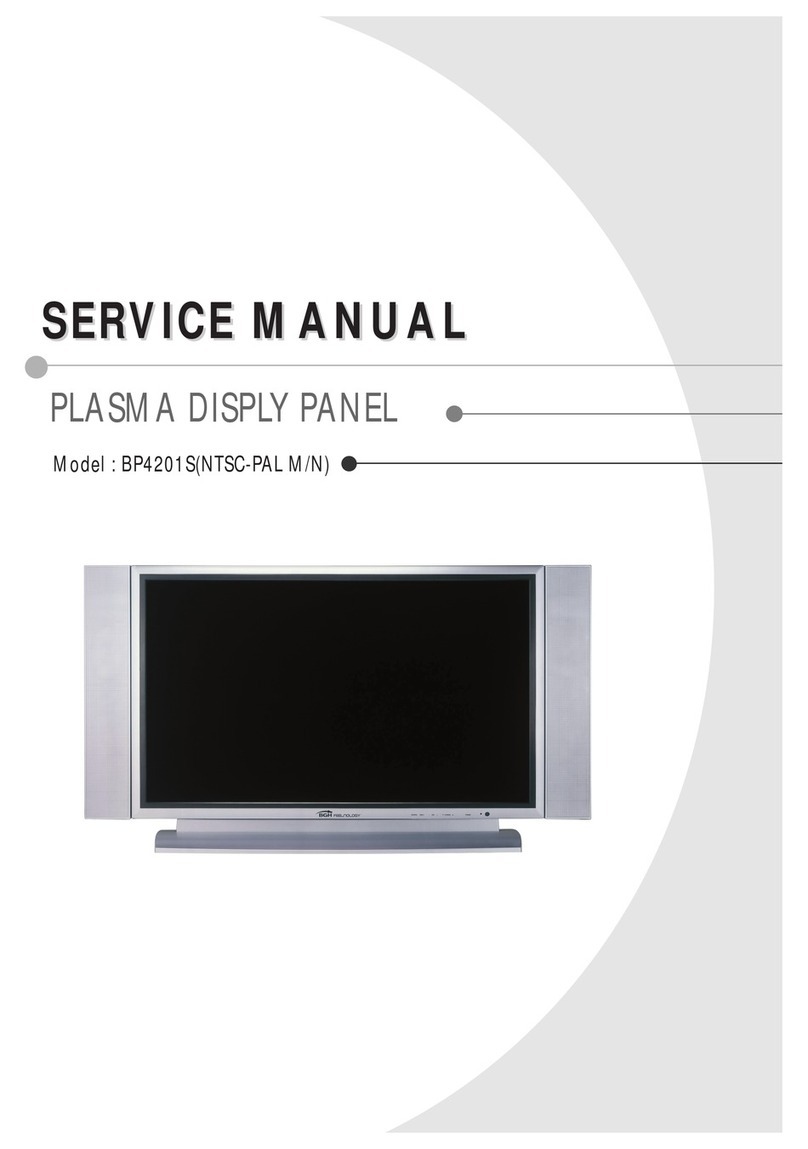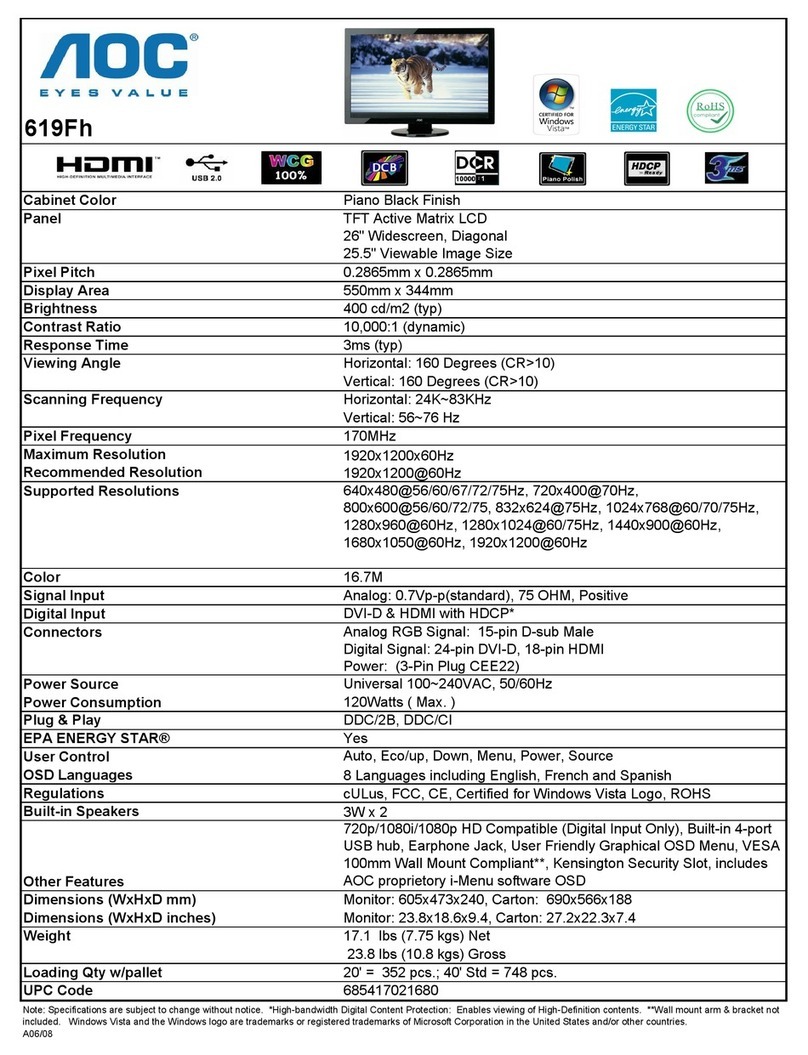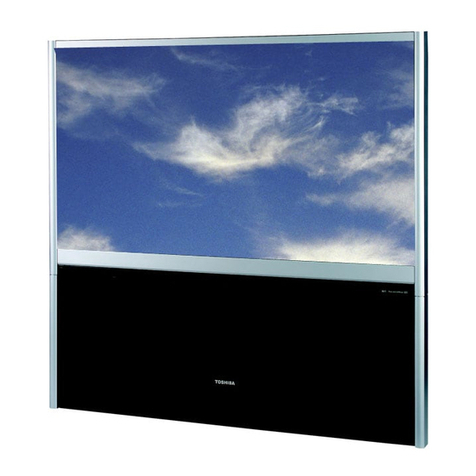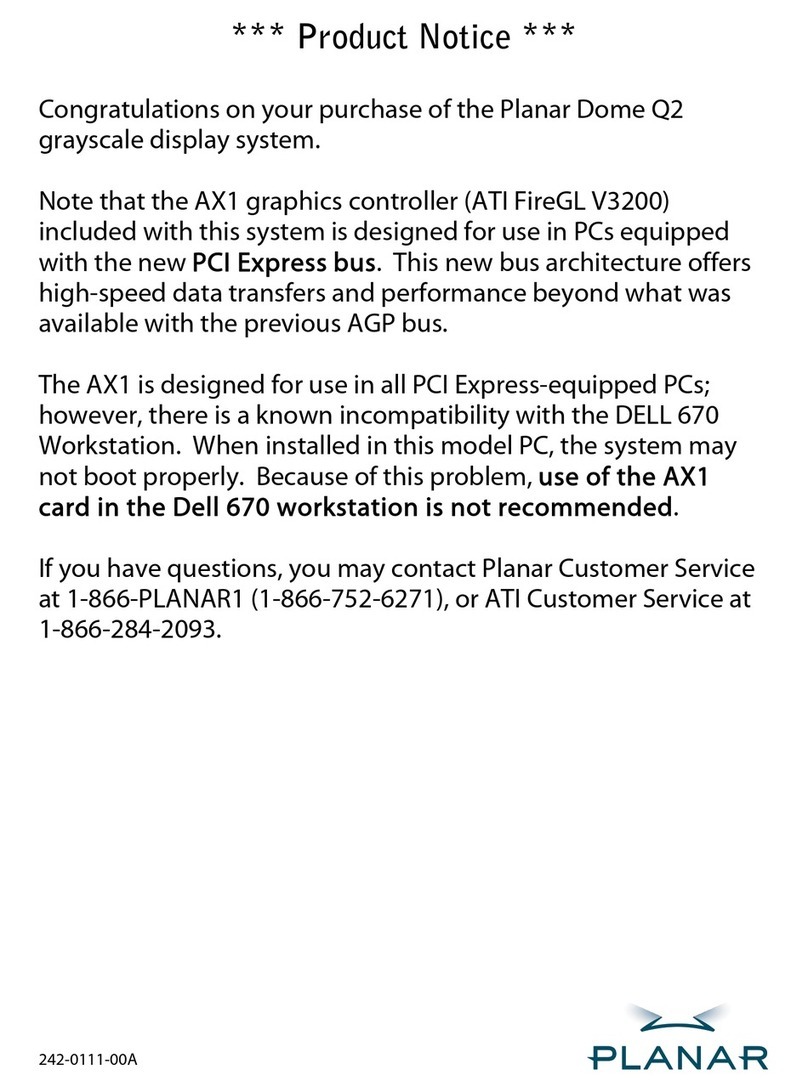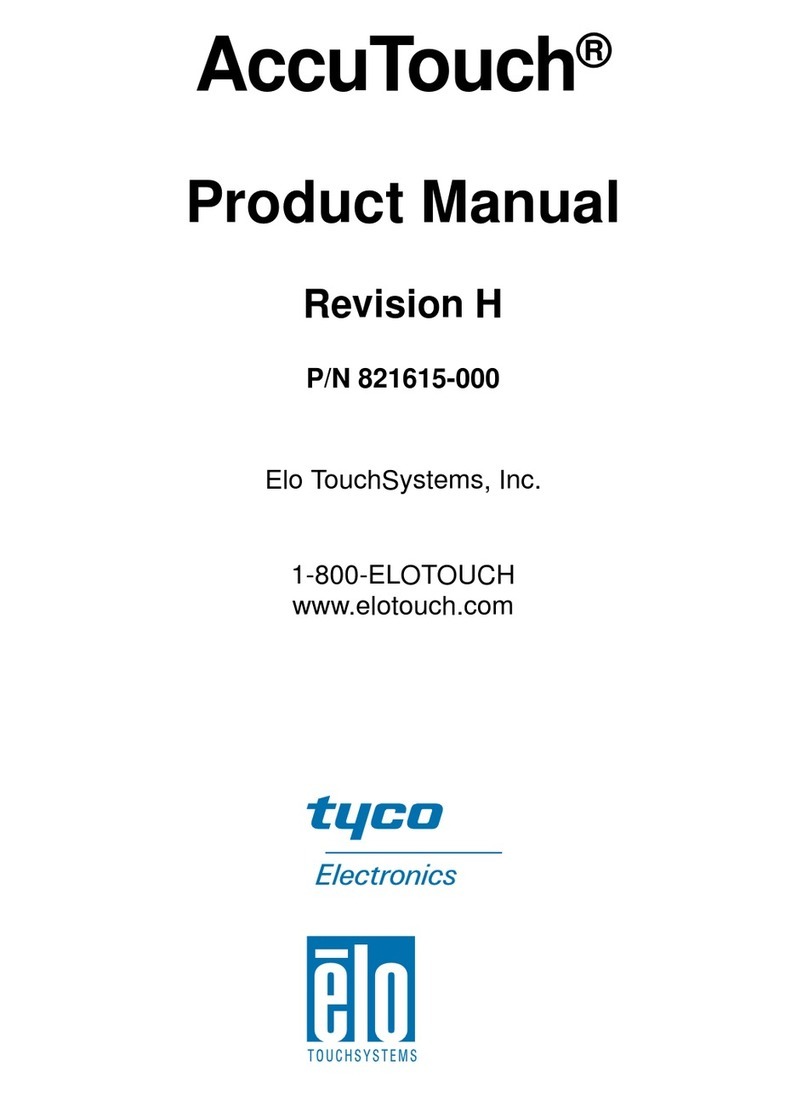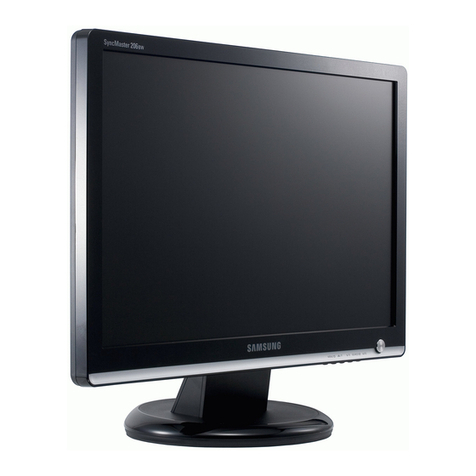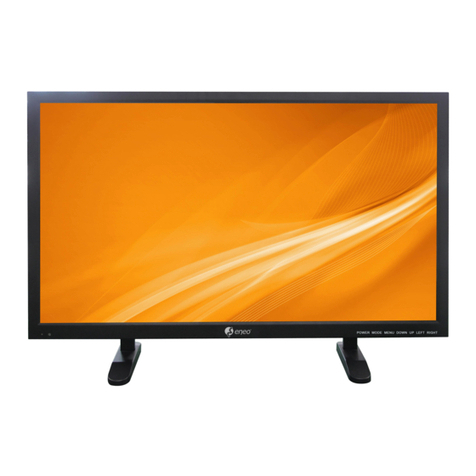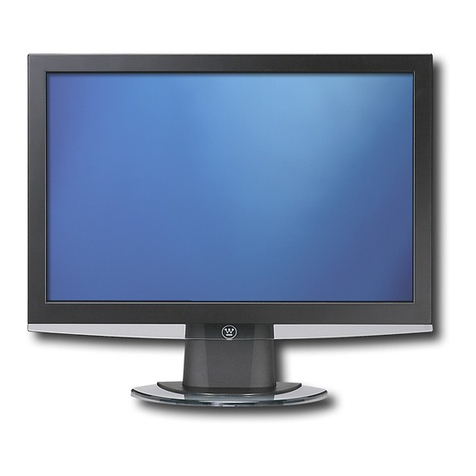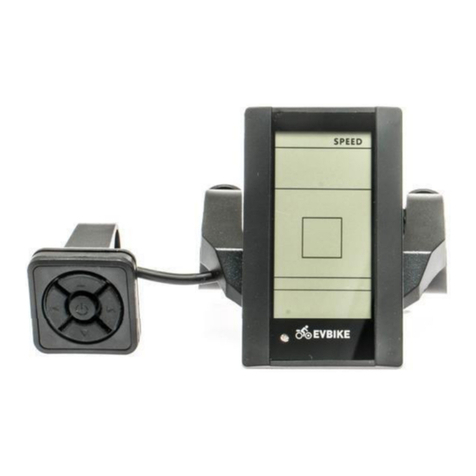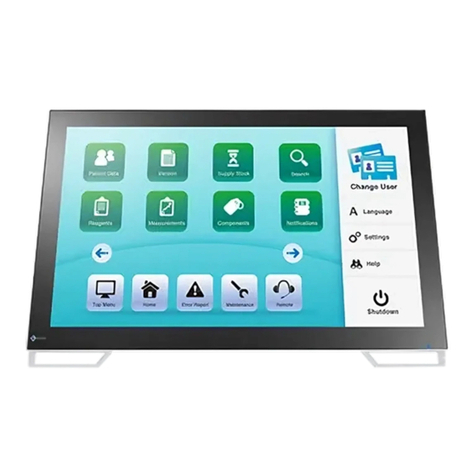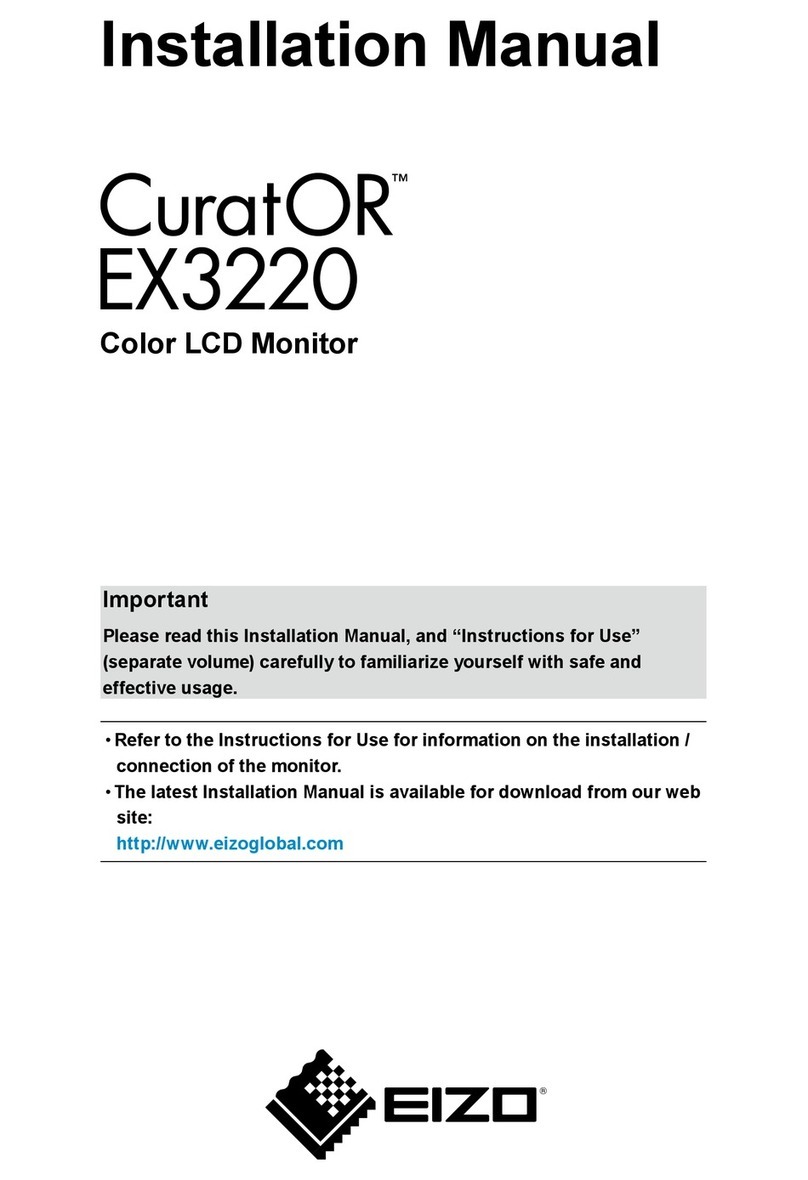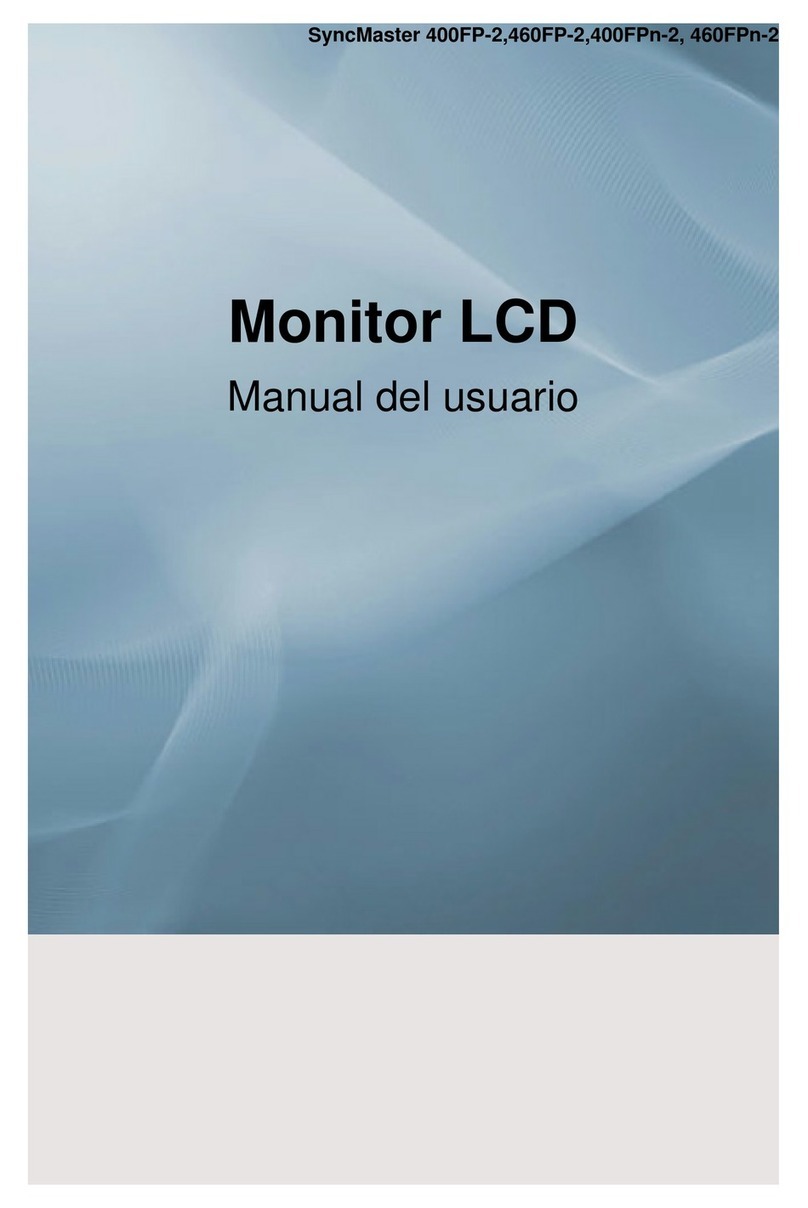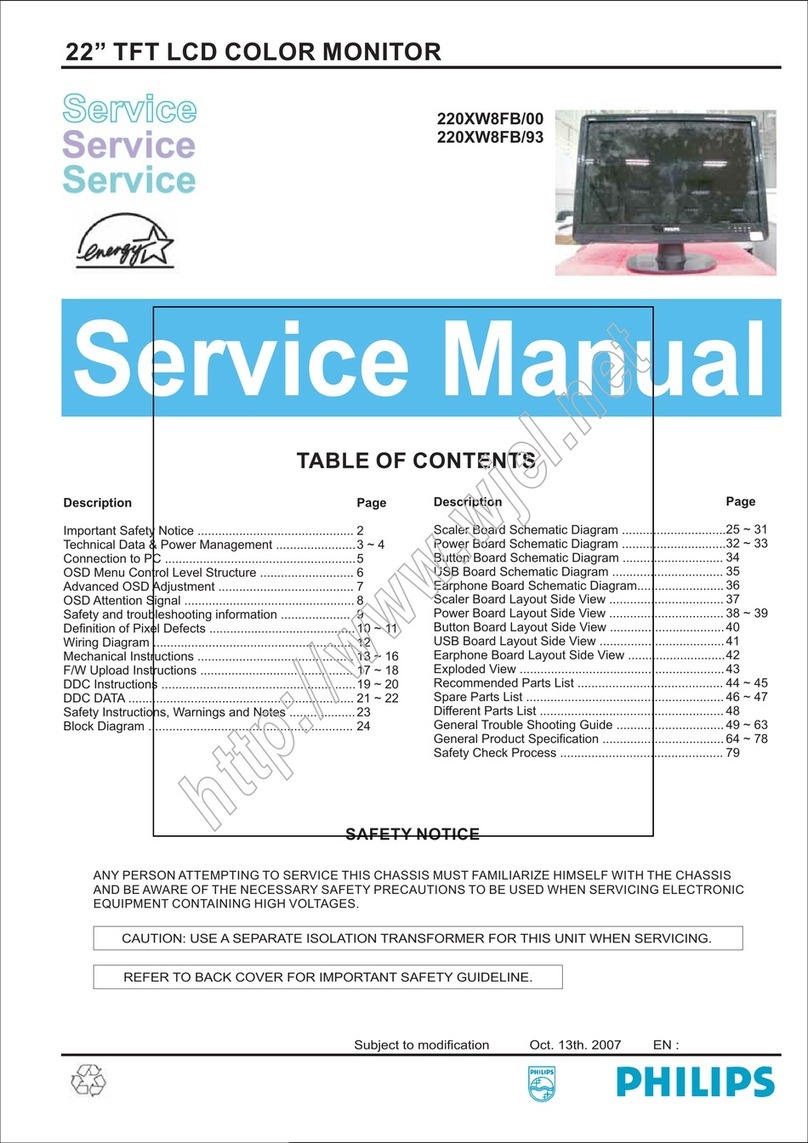TSI Quest QUESTEMP 34 User manual



iii Table of Contents
Table of Contents
Introduction ............................................................1
QUESTempº Models...............................................1
Getting Started .......................................................2
Up and Running overview ...................................2
Keypad Operation................................................3
Turning on/off and basic operation......................4
Placement for Monitoring/Testing........................4
Sensors...................................................................5
Natural Wet Bulb Thermometer...........................5
Globe Thermometer ............................................5
Dry Bulb Thermometer ........................................6
Relative Humidity Sensor ....................................6
Tri-sensor Calculation and Remote Cable ..........7
Tri-sensor weighted average...............................7
Measurements........................................................8
Wet Bulb Globe Temperature..............................8
Stay Times/Rest Times (QTº36 only)..................8
Heat Index/Humidex ............................................9
Air Flow................................................................9
Thermal Comfort (QUESTempº 36
model only) ........................................................9
Operating QUESTempº 34 & 36 ..........................10
View...................................................................10
Setup .................................................................10
Print ...................................................................11
Reset .................................................................11
Run ....................................................................12
Displayed Items....................................................13
Stay Time...........................................................14
Data Logging ........................................................15
Printing..................................................................16
Serial..................................................................16
Parallel...............................................................16
Air Flow functionality ..........................................18
Operating sequence ..........................................19
Data Logging Air Flow .......................................19
Batteries for Air Probe .......................................19
Operational Check ...............................................20
Power options....................................................20
9-Volt Alkaline Battery Replacement.................20
Approved 9-Volt Batteries .................................21
NiMH Battery Pack............................................21
Appendix A: Specifications ...............................22
Measurements...................................................22
Data Logging.....................................................22
Languages.........................................................22
Housing .............................................................22
Size ...................................................................22
Weight ...............................................................22
Sensor Types ....................................................22
Accuracy............................................................22
Operating Temperature Range .........................22
Remote Sensor Bars.........................................23
Power Options...................................................23
Battery Life ........................................................23
Charge Time (NiMH Battery Pack)....................23
Air Probe Accessory (QUESTempº 36
model only)......................................................23
Product markings and batteries ........................23
Appendix B: Heat Exposure Tables..................25
ACGIH ...............................................................25
ACGIH Clothing Corrections .............................26
United States Navy............................................26
Electrical power research institute (EPRI).........28
Appendix C: Accessories ...................................29
Air Probe Accessories.......................................29
Appendix D: Detection Management
Software DMS.....................................................30
DMS Quick overview.........................................30
Downloading your sessions in DMS..................30
Viewing/Analyzing and Quick Reporting in
DMS ................................................................32
Reporting and Printing.......................................34
Contact/Service information...............................35
Technical Support Contacts ..............................35
Service Contact Information..............................35
Returning for Service.........................................36
Calibration ............................................................36
Warranty ...............................................................37
Contents

iv Table of Contents
List of Figures and Tables
1-1: QUESTempº 36 model...................................... 1
1-2: Keypad explained.............................................. 3
1-3: Main menu of the QUESTempº 34 & 36 ........... 4
1-4: Filling wet bulb reservoir ................................... 5
1-5: Ports identified .................................................. 7
1-6: Viewing measured data...................................10
1-7: Setup selected in main menu.......................... 10
1-8: Run mode indicator .........................................12
1-9: Wet and Dry screen ........................................13
1-10: Globe screen................................................... 13
1-11: WBGTi & WBGTo screen ...............................13
1-12: RH and H.I/HU screen......................................13
1-13: Air Flow screen ................................................. 14
1-14: Stay times (ACGIH) .......................................... 14
1-15: Time & Date screen..........................................14
1-16: Battery & Memory screen .................................14
1-17: Navy Stay time screen......................................15
1-18: EPRI Stay time screen......................................15
1-19: Sample printout (page 1) ............................... 16
1-20: Sample printout (page 2)................................. 17
1-21: Air flow configuration ....................................... 18
1-22: 9-volt battery.................................................... 20
1-23: NiMH rechargeable battery ............................. 21
1-24: Communicating to DMS .................................. 30
1-25: Downloading with the QT⁰34/36 ..................... 31
1-26: Data Finder page (Analyze/Quick Report
options) ........................................................... 32
1-27: Data layout page (displays your data in
charts and graphs).......................................... 33
1-28: Reporting and printing ..................................... 34
Tables
1-1: Example of a Memory table............................. 15

1Introduction
Up and Running Overview
Introduction
The QUESTempº 34/36 models are portable heat stress monitors that are designed to be rugged,
easy-to use instruments to quickly and accurately assess the potential for individual heat stress
based on environmental conditions.
QUESTempº Models
The QUESTempº 34 and QUESTempº 36 models measure and calculate the dry bulb
temperature, wet bulb temperature, globe temperature, WBGT indoor index, WBGT outdoor
index, relative humidity, and Heat Index or Humidex. These models support RS-232
communications and works with the optional software analysis program, TSI Detection
Management Software (DMS).
With the QUESTempº 36, you have the capability to display stay times in order to manage
work/rest regimens. Guidance is based on the screening criteria for heat stress as defined in the
ACGIH TLV Handbook, U.S. Navy PHEL charts, and EPRI Action Limits. (See Appendix B for
detailed chart information.)
An additional feature with the QUESTempº 36 is an optional detachable air-probe for measuring
air velocity (wind speed) to determine appropriate levels of indoor thermal comfort monitoring.
Figure 1-1: QUESTempº 36 Heat Stress Monitor
QTº36 model with (optional)
air-probe attachment
Introduction

Getting Started
Up and Running Overview
2
Getting Started
Up and Running Overview
1. Make sure the wet bulb wick is clean. Fill reservoir with distilled water. DO NOT use
ordinary tap water.
• See “check wick and fill natural wet bulb”.
2. Place the QUESTempº 34 & 36 in the work area in a safe location approximately 3.5 feet
off the ground.
3. Power On the QUESTempº34 & 36 and check the battery.
• If the battery voltage displayed during the power-on sequence is less than or equal
to 6.4 volts, replace or recharge the batteries.
4. Be aware that the sensors require 10 minutes to stabilize to a new environment.
5. In the main menu, View will be selected (an indicator arrow denotes the selected menu).
Press the I/O Enter key to select.
6. Press the Run/Stop key to begin storing data.
7. Use the Up/Down Arrow keys to set the display to the desired items.
Getting started

Getting Started
Keypad Operation
3
Keypad Operation
The unit operates using a keypad with four keys. The I/O Enter key responds when the key is
released while all other keys respond when the key is pressed.
Keys
Explanation
I/O Enter key
The unit turns on with a single key press. The unit turns off by
holding the key down while a countdown of 3-2-1 occurs in the
lower right corner of the display. This key is also used to select a
mode (such as Setup or View) or enter setup changes.
Pressing and releasing the key while viewing temperatures causes
the display to view the next available sensor bar (indicated in the
upper right corner of the display).
Up Arrow key
Changes items appearing in the display. Scrolls up.
Down Arrow key
Changes items appearing in the display. Scrolls down.
Run/Stop key
From the menu or view modes, pressing this key starts or stops the
run mode. Pressing this key will exit the setup, print or reset
modes.
Escaping or moving
back one screen
If you are in the setup, print, reset, or calibration screens, you can
press Run/Stop key to escape or move back one screen.
NOTE: The QUESTempº 34 & 36 models have the same keypad. Figure 1-2 is an example
of the QUESTempº 36 model with the optional air-probe attachment.
Figure 1-2: Keypad explained
I/O Enter key
Run/Stop key
Up arrow key
Down arrow key

Getting Started
Turning On/Off and Basic Operation
4
Turning On/Off and Basic Operation
To quickly get you started with the QUESTempº 34 & 36 model, the following section explains
how to turn on the instrument, run, and stop your session.
1. Press the I/O Enter key to turn on. Following the model and revision information displayed
on the screen, the main menu will appear.
VIEW PRINT
SETUP RESET
Indicator arrow
Indicates the selected menu option. Then press I/O
enter to select or press up/down arrows to select
another option
Figure 1-3: Main menu of the QUESTempº 34 & 36
2. Press the I/O Enter key (when view is selected) to access the measurement screens.
The Wet and Dry measurements screen will display. (See Figure 1-6 for screen
example.)
3. To view different measurements, press the Up or Down arrow key to toggle through the
views.
NOTE: There are five user-selectable languages. If you see the fields such as Wet, Dry,
WBGTi, and WBGTo this indicates the measurements are displaying in English.
To display an alternative language, select Setup from the main menu. Press the Down
arrow repeatedly until “English” (or the appropriate language) appears. Then repeatedly
press the I/O enter key to toggle through the languages. Once selected, all menus and
measurement screens will change to the selected language. To return to the main
menu, press the Run/Stop key.
4. To return to the main menu, press and hold the I/O Enter key (3, 2, 1 countdown will
appear) and the main menu will display.
To select an option on the main menu, press the up or down arrow until an arrow
appears directly in front of the appropriate menu selection and then press I/O enter key.
5. To power off, press and hold the I/O enter key from the main menu.
Placement for Monitoring/Testing
The QUESTempº 34 & 36 model should be placed at a height of 3.5 feet (1.1 m) for standing
individuals or 2 feet (.6 m) for seated individuals. Tripod mounting is recommended to get the unit
away from anything that might block radiant heat or air flow. A 1/4" x 20 threaded bushing on the
bottom of the instrument allows mounting to a standard photographic tripod. DO NOT stand close to
the unit during sampling.
NOTE: Before measuring, allow 10 minutes for the sensors readings to stabilize.

Sensors
Natural Wet Bulb Thermometer
5
Sensors
Natural Wet Bulb Thermometer
The natural wet bulb thermometer
gives an indication of the effects of
humidity on an individual. Relative
humidity and wind speed are taken
into account by measuring the
amount of evaporative cooling taking
place at a thermometer covered with
a moistened wick.
A B C
A. Globe thermometer
B. Natural wet bulb
thermometer
C. Dry bulb thermometer
Check Wick and Fill Natural Wet Bulb
The QUESTemp° Heat Stress Monitor uses a cotton wick immersed into a reservoir containing
distilled water. DO NOT use ordinary tap water, as the contaminants that are left behind after
evaporation will shorten the life of the wick and cause high readings. If the wick is discolored it
should be replaced. To replace the wick, slide the old wick off the top of the sensor. Place a
new wick over the sensor, making sure that the bottom of the wick is down in the reservoir.
Wick
Reservoir cover
Reservoir
Filling wet bulb reservoir
1. Remove reservoir cover and fill with
distilled or de-ionized water.
2. Replace reservoir cover.
Figure 1-4: Filling wet bulb reservoir
Globe Thermometer
The globe thermometer (left position) gives an indication of the radiant heat exposure on an
individual due to either direct sunlight or hot objects in the environment. This is accomplished by
placing a temperature sensor inside a blackened copper sphere and measuring the temperature
rise. The WBGT index is based on the response of a 6 inch diameter globe. The QUESTemp°
uses a 2-inch diameter globe for a faster response time. The temperature of the 2-inch globe is
correlated to match that of a 6 inch globe.
Sensors

Sensors
Dry Bulb Thermometer
6
Dry Bulb Thermometer
The dry bulb thermometer (right position) measures the ambient air temperature. This
measurement is used in the outdoor WBGT calculation when a high solar radiant heat load may
be present. The series of white plates surrounding the sensor shield it from radiant heat.
Relative Humidity Sensor
A relative humidity sensor is located in a compartment inside of the sensor bar housing. Slots in
the housing allow air to circulate around the sensor.

Tri-sensor Calculation and Remote Cable
Tri-sensor Weighted Average
7
Tri-sensor Calculation and Remote Cable
The top sensor bar (sensor 1) may be removed from the instrument and used through a
remote cable. Shelter the instrument and remote the sensor bar if the measured
environment is expecting heavy rain or if temperatures are above 60C.
The sensor 2 and sensor 3 jacks on the side of the instrument allow simultaneous monitoring of
up to three sensor arrays using connecting cables.
Cable lengths of up to two hundred feet (61 meters) may be used without a decrease in
accuracy provided the environment does not contain strong electromagnetic fields.
The data from these arrays may be viewed separately or combined into a weighted average
WBGT reading per ISO 7243. Change the displayed sensor bar by pressing and releasing
the enter key. The upper right corner of the display shows the current sensor bar. 1 refers
to the top sensor bar, 2 and 3 are labeled on the side of the unit, W indicates the weighted
average which only appears if a WBGT is displayed and all three of the sensor bars are
attached.
Tri-sensor Weighted Average
Per the recommendations outlined in ISO 7243:2017, when the temperature in the space
surrounding a worker is not uniform, it is necessary to determine the WBGT index at three
heights corresponding to the worker's ankles, abdomen and head and perform a weighted
average on those values. It is computed using the formula:
WBGTw = (WBGThead + (2 x WBGTabdomen) + WBGTankles)/4
The QUESTemp36 always assigns the top sensor bar the double weighting. This calculation
is shown if a WBGT display has been selected and if three sensor sets are connected.
Removable sensor bar
RS-232
Tri-sensor calc.
Sensor
Bars 2 & 3
Figure 1-5: Ports identified
Tri-sensor
Calculation and
Remote Cable

Measurements
Wet Bulb Globe Temperature
8
Measurements
The QUESTemp34 & 36 data logging area heat stress monitor directly senses the four
parameters: ambient or dry bulb temperature (DB), natural wet bulb temperature (WB), globe
temperature (G), and relative humidity (RH).
The QT34/ 36 compute the Wet Bulb Globe Temperature (WBGT), stay times for three
possible indices (QT36 only), and the Heat Index (HI) or the Canadian Humidex. Using inputs
on the side of the instrument, two additional sensor arrays can monitor up to three locations
simultaneously.
On the QUESTempº 36 model, you can measure air flow, in meters per second, by plugging an
optional hot wire anemometer sensor into a side jack on the unit.
Using Detection Management Software (DMS), you can determine the thermal comfort indices,
Predicted Mean Vote (PMV) and Predicted Percent Dissatisfied (PPD) (with the QUESTempº
36 model only).
Wet Bulb Globe Temperature
The WBGT is a weighted average of the three temperature sensors, a globe thermometer, a
wet bulb thermometer, and a dry-bulb thermometer, using the equations listed below.
WBGT (indoor) = 0.7WB + 0.3G (denoted as “WBGTi” on the display)
WBGT (outdoor) = 0.7WB + 0.2G + 0.1DB (denoted as “WBGTo” on the display)
The resulting WBGT values can then be compared to indices of work-rest regimens (stay times)
based upon workloads.
Stay Times/Rest Times (QTº36 only)
Stay times represent how long a worker should be able to safely work under heat stress
conditions (available on QUESTempº 36 only). Select one of the three indices for displaying
and printing from the unit: ACGIH Stay Times, NAVY PHEL’s, or EPRI Action Limits. (For
setup, refer to “Setup.”For detailed rest times refer to charts in Appendix B.)
Measurements

Measurements
Heat Index/Humidex
9
Heat Index/Humidex
The Heat Index is determined using the dry bulb temperature and relative humidity. Based upon
charts available from the U.S. National Weather Service, Heat Index represents how an average
person feels relative to climate conditions. For a given temperature, the higher the humidity, the
higher the heat index.
The Heat Index is defined over a temperature range of 70F –120F (21C –49C) and a relative
humidity range of 30% - 99%. Outside of this range, the instrument will show dashes in the display
for the Heat Index.
The Humidex, used primarily in Canada, functions similar to the Heat Index concept. The values are
slightly different. The Humidex is defined over a temperature range of 70F –109F (21C –43C)
and a relative humidity range of 20% –99%. Outside of this range, the instrument will show dashes
in the display for the Humidex.
Air Flow
The QUESTemp36 measures air flow if the Air Probe accessory is used. The Air Probe uses an
omni-directional anemometer sensor that measures air flow between 0 and 20 meters per second in
0.1 m/s increments. See “Air Flow Functionality,”for more details.
Thermal Comfort (QUESTempº 36 model only)
Thermal comfort readings for indoor environments are a benefit of DMS software and are not
displayed or printed from the instrument directly. Readings are derived from the dry bulb, relative
humidity, mean radiant temperature, air flow, and user entered parameters of clothing, metabolic rate
and external work.
Thermal comfort indices, Predicted Mean Vote (PMV) and Predicted Percent Dissatisfied (PPD), help
predict the thermal satisfaction level of a person with their indoor environment. The PMV is a rating
scale of +3 to -3 where +3 is much too warm, -3 is much too cool, and 0 is thermally neutral. The
PPD reflects what percent of people in a given location would be dissatisfied with their thermal
surroundings.
The formulas used by DMS software to derive the PMV and PPD come from the international
standard ISO 7730 “Moderate thermal environments - Determination of the PMV and PPD indices
and specification of the conditions for thermal comfort.”

Operating QUESTempº 34 & 36
View
10
Operating QUESTempº 34 & 36
Use the Up Arrow and Down Arrow keys to move the marker in the display in front of the
desired mode. Pressing the I/O Enter key will select the mode.
View
Displays the measured data but does not log it. If more than one set of sensors is plugged into
the unit, these can be displayed by pressing and releasing the I/O ENTER key. The displayed
sensor set is shown in the upper right corner.
WET 65.5ºF 1
DRY 74.0ºF
View mode
Indicates you are viewing sensor one data
Figure 1-6: Viewing measured data
NOTE: To return to the menu, hold down the I/O ENTER key while a 3, 2, 1 countdown is
shown in the lower right corner of the display. Then the menu screen will appear
(see Figure 1-3 for an example).
Setup
The setup screen is used to change the following parameters: temperature units, language, time,
date, logging rate (QUESTempº 36 only), selecting between Heat Index and Humidex, and
setting stay time parameters.
To Setup parameters do one of the following:
1. From the main menu, select Setup by pressing the I/O Enter key.
VIEW PRINT
SETUP RESET
Setup selected
Figure 1-7: Setup selected in main menu
2. Use the Arrow keys to select an item (listed below).
Temperature: Celsius, Fahrenheit.
Language: English, Spanish, French, Italian, German.
Time: 24 hour clock only.
Date: Day-month-year format.
Log Rate: 1, 2, 5, 10, 15, 30, 60 minutes.
Heat Index (United States), Humidex (Canada)
Operation

Operating QUESTempº 34 & 36
Print
11
Flow: On, Off .
Index: none, ACGIH, Navy, EPRI and select either: WBGTi (indoor), WBGTo
(outdoor) for Index setting.
Index Settings
Explanation
TLV and action limit
These index settings only apply to the ACGIH Index.
EPRI and Navy will ignore this setting.
Clothing Correction
Parameters are set from 0 - 9.9C. This is a clothing
correction for the WBGT in degrees Celsius and is
applied to the selected WBGT when the work duration
is calculated. (It will not affect the WBGT as displayed
by the unit.) This value should typically be set to 0.0 for
the Navy. (The field is noted as “Clo Corr”.)
3. Press the I/O Enter key to change a parameter. Time and date require using the Up/Down
Arrows and I/O Enter keys to modify each number.
NOTE: At any time, you can move back one level, by pressing the Run/Stop key.
4. Exit Setup by pressing the Run/Stop key.
Print
QTº34/36 allows printing to a parallel or serial printer or to a computer. The QUESTempº 36 will
recognize the cable plugged in and configure itself for serial or parallel. If no cable is plugged in,
it will default to serial. Press I/O Enter key to begin printing. Press Run/Stop key to return to
the menu.
NOTE: If you want to stop the printing, press I/O enter key until you return to the main menu.
When the printer has stopped printing, remove the cable from the printer to the
instrument.
Reset
Resetting enables you to clear the logged data from memory. Press the I/O Enter key to enter
the Reset mode. Clear the memory by holding down the I/O Enter key while the display counts
down from three.

Operating QUESTempº 34 & 36
Run
12
Run
The run mode begins a session in memory and logs the data.
1. Begin a session by pressing the Run/Stop key from the view mode (or measurement
view). An asterisk in the lower right corner indicates the run mode.
To toggle through the views, press the up or down arrow.
WBGTi 66.7ºF 1
WBGTo 68.6ºF
Run indicator
Figure 1-8: Run mode indicator
2. End the session by pressing the Run/Stop key again. (The session will stop recording
when the asterisk is no longer displayed.)
NOTE: If the logging memory is full or if there are no sensors plugged into the unit,
attempting to enter the Run mode will result in an error message. If the memory
capacity is exceeded, the asterisk in the lower right corner of the display will
turn into an “F” and the memory remaining screen will show “0.0”.

Displayed Items
Run
13
Displayed Items
For the QUESTemp34 & 36 models, the number in the upper right corner indicates which
sensor bar’s data is displayed.
“1”indicates the sensor bar placed on (or attached to) the top of the instrument. Sensors 2
and 3 are labeled on the side of the unit as “Sensor 2”, and “Sensor 3”.
“W”indicates the weighted average which only appears if a WBGT is displayed and all
three sensor bars are attached. An asterisk in the lower right corner indicates that the unit is
in the run mode and is logging data.
The following measurements can be accessed on the display:
Screen 1: WET (Wet bulb)
DRY (Dry bulb)
WET 80.5ºF 1
DRY 92.2ºF
Figure 1-9: Wet and Dry screen
Screen 2: GLOBE
GLOBE 92.4.ºF 1
Figure 1-10: Globe screen
Screen 3: WBGTi (Indoors)
WBGTo (Outdoors)
WBGTi 84.1 º F 1
WBGTo 107.5 º F
Figure 1-11: WBGTi & WBGTo screen
Screen 4: RH (Relative Humidity)
H.I. or HU
(Heat Index or Humidex)
RH 66.2 % 1
H.I. 84.3ºF
Figure 1-12: RH and H.I/HU screen
Displayed Items

Displayed Items
Stay Time
14
Screen 5: Air Flow
(If turned ON via setup
with QUESTempº 36 only)
FLOW 0.3m/s 1
Figure 1-13: Air Flow screen
Screen 6: Stay times
(QUESTempº 36 only)
L M H VH 1
60 45 30 15
Figure 1-14: Stay times (ACGIH)
Screen 7: Time (24 hour format)
Date (day, month, year)
TIME 11:04:13 1
DATE 26-JUN-08
Figure 1-15: Time & Date screen
Screen 8: BAT (Battery voltage)
MEM (Logging memory
available in days)
BAT 11:04:13 1
MEM 10.4dy
Figure 1-16: Battery & Memory screen
NOTE: A series of dashes appear in the display if one of the following occur:
The Heat Index or Humidex is outside of its allowable range.
The temperature is outside of its allowable range.
A temperature sensor has failed.
Stay times temperatures are outside of the defined range.
Stay Time
The screen(s) displaying stay time data appear different for each of the possible indices
(available with QUESTempº 36 model only).
If ACGIH is selected, the recommended working minutes per hour are shown for each of the
workload categories Light (L), Moderate (M), Heavy (H), and Very Heavy (VH). (See Figure 1-14
above.)

Data Logging
Stay Time
15
If the Navy PHELS are selected, the recommended working hours are shown based on a
maximum of eight hours. Three screens are used to display the PHELs two at time.
NOTE: “8:01”following one of the PHELs indicates greater than eight hours.
PHEL_5 3:10 1
PHEL_6 2:10
Figure 1-17: Navy Stay time screen
If EPRI is selected, the recommended working hours are shown based on a maximum of four
hours. Working hours for Light (L), Moderate (M), and Heavy (H) workload categories are
displayed below.
NOTE: “4:01”indicates greater than four hours.
L M H 1
4:01 3:00 1:30
Light, Medium, and Heavy maximum hours
displayed
Figure 1-18: EPRI Stay time screen
Data Logging
Data from each sensor is recorded at the interval set by the logging rate (for QUESTempº 34 &
36 models only). Every time Run/Stop is pressed, a session is either started or ended in
memory. Each session contains a header with time, date, and summary information.
Memory Table: Gives the number of logging DAYS.
Log Rate
1 min
2 min
5 min
10 min
15 min
30 min
60 min
1 sensor
11.2
22.5
56.2
112.4
168.6
337.3
674.5
2 sensors
5.6
11.2
28.1
56.2
84.3
168.6
337.3
3 sensors
3.7
7.5
18.7
37.5
56.2
112.4
224.8
Table 1-1: Example of a Memory table

Printing
Serial
16
Printing
The recorded data can be sent to a computer through the serial RS-232 port or to a parallel
printer. Serial transmission requires TSI cable #054-715. Parallel transmission requires TSI cable
#056-875. With the cable plugged into the RS-232 auxiliary port, select Print from the menu and
press the I/O Enter key to enter the Print mode. Begin printing by pressing the I/O Enter key.
Press the key again to abort printing.
Serial
DMS software is recommended for downloading, storing, and graphing your data.
Communications programs such as Windows®HyperTerminal®program may also be used to
capture the printout into a file. The baud rate is fixed at 9600.
Parallel
Data can be sent directly to parallel printers that accept direct ASCII test input without special
drivers. Make sure the printer is powered on and is online, ready to accept data, prior to
printing.
Figure 1-19: Sample printout (page 1)
TSI Page 1
HEAT STRESS REPORT
File Name _________________________ Questemp 36 Rev 1.00
Serial # TK09090909
Employee _________________________
Facility _________________________ Session (3)
Start: 21-FEB-08 11:07:32
Department _________________________ Stop: 21-FEB-08 11:10:15
Job _________________________ Printed: 21-FEB-08 11:16:00
Comments/Notes______________________________________________
____________________________________________________________
Logging Interval: 1 minutes
Degrees Fahrenheit
MAXIMUM LEVELS, Sensor 1
WBGT IN 69.2 21-FEB-08 11:10:14
WBGT OUT 68.3 21-FEB-08 11:10:08
WET BULB 59.7 21-FEB-08 11:10:08
DRY BULB 82.7 21-FEB-08 11:09:56
GLOBE 91.4 21-FEB-08 11:10:12
HEAT INDEX 0 00-XXX-00 00:00:00
REL HUMIDITY 14% 21-FEB-08 11:07:32
FLOW (m/s) 0.6 21-FEB-08 11:09:08
MAXIMUM LEVELS, Sensor 2
WBGT IN 81.2 21-FEB-08 11:10:06
WBGT OUT 80.5 21-FEB-08 11:10:11
WET BULB 70.5 21-FEB-08 11:10:11
DRY BULB 99.2 21-FEB-08 11:09:07
GLOBE 106.1 21-FEB-08 11:10:06
HEAT INDEX 0 00-XXX-00 00:00:00
REL HUMIDITY 15% 21-FEB-08 11:07:32
MAXIMUM LEVELS, Sensor 3
WBGT IN 69.0 21-FEB-08 11:09:56
WBGT OUT 68.6 21-FEB-08 11:09:56
WET BULB 58.8 21-FEB-08 11:09:56
DRY BULB 88.6 21-FEB-08 11:10:08
GLOBE 93.0 21-FEB-08 11:10:03
HEAT INDEX 0 00-XXX-00 00:00:00
REL HUMIDITY 11% 21-FEB-08 11:07:32
MAXIMUM LEVELS, Sensor(WEIGHTED AVERAGE)
WBGT IN 72.1 21-FEB-08 11:10:14
Printing
This manual suits for next models
1
Table of contents
